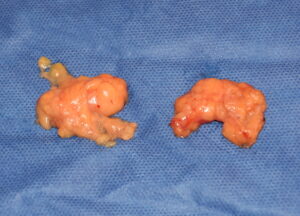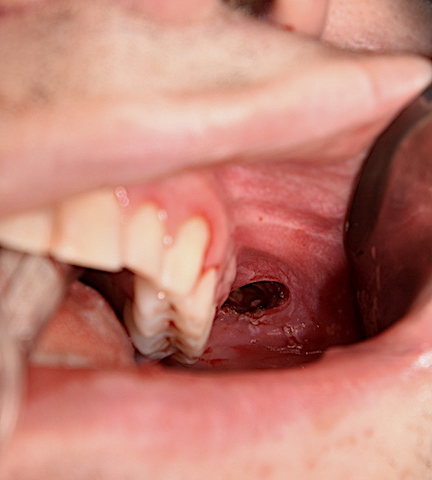The buccal fat pad is as well known collection of facial fat that is the frequent site of surgical extraction. Unlike aesthetic fat removal from almost anywhere else in the body, which is by liposuction, the buccal fat pad is removed en bloc. Unlike subcutaneous fat and as the name implies it is a discrete collection of fat (pad) that has some unique anatomic characteristics to it.
It is an encapsulated mass of fat in the cheek between the buccinator muscle and the masseter and zygomaticus muscles. There are other fat pads in the face (malar and jowl pads) but they are more superficial being right under the skin of the cheek. Besides its deeper location it is also a vascularized or pedicled tissue mass. There is a distinct small artery that courses through the fat pad which would be expected in an encapsulated fat mass very similar to that of a lipoma. This is an important piece of anatomic information when it is being removed.


Closure of such a small intraoral incision can be done with a single resorbable suture….or can not be closed at all. Because it is a high maxillary incision way up under the upper lip back along the upper jaw it is not exposed to any significant liquid or food debris. And such a small incision heals rapidly.
Dr. Barry Eppley
Indianapolis, Indiana



